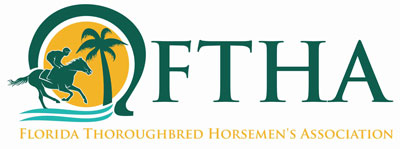The horse racing industry in Florida is world-renowned for both its breeding and racing of thoroughbreds. The Ocala area boasts most of the State’s breeding farms and helps make Florida the second largest producer of thoroughbred racehorses in the United States after Kentucky. Racing in Florida, and particularly at Gulfstream Park, is the envy of most racing jurisdictions in the country with a combination of home-bred horses and out of state horses causing field sizes to be well above the national average.
A 2014 study revealed that the Florida horse racing industry supports more than 12,000 in-state jobs, pays those workers more than $400 million in wages and benefits each year, and generates an economic impact for the State of nearly one billion dollars annually. It is safe to say that approximately half of those workers are employed by trainers who race their horses in South Florida and the vast majority of those workers are minorities.
Live thoroughbred racing in South Florida is a growing, year-round industry with 10 months of racing at Gulfstream Park in Hallandale Beach and 2 months of racing at Gulfstream Park West located in Miami Gardens.
In 2015, Gulfstream Park achieved a record handle (amounts wagered) of $1.34 billion which represented a 14% increase over the previous record handle of $1.17 billion set in 2014.
The upward trend continues in 2016 as the Gulfstream Championship Meet from December 2015 to April 2016 achieved a record handle which was 15% higher than the previous record handle set the year before. Gulfstream also set an all-time record Florida Derby Day handle in 2016 when more than $32 million was wagered on April 2nd this year. Gulfstream Park horse racing continues to be a major tourism attraction for South Florida and fan interest is on the upswing.
The typical racehorse trainer operates an independent business which has 6 to 8 horses in training and employs from 4 to 8 people per year. The out-of-pocket cost of training a racehorse is approximately $25,000 – $30,000 per year. Most of that cost goes to workers who care for the horses on a daily basis. Other costs include feed and bedding from local producers and local veterinary and blacksmith care. With a racehorse population of 2,500 year-round in South Florida, the direct economic impact of the upkeep alone for these horses to the local economy is approximately $70 million every year. Racehorses start their careers at age 2 or 3. Getting a racehorse to the track is also a very labor-intensive effort. From breeding, to foaling, to raising and training the horse for 2-3 years, many workers and suppliers of goods are involved in the process.
The owners of a typical racehorse have invested at least $100,000 into each horse before the horse even starts its racing career. For the horses racing in South Florida that represents an initial investment of at least $250 million. And with an average racing career that ends at around 6 years old, owners must replenish their stables and renew that $250 million investment every 3-4 years.
The loss of guaranteed racing opportunities that would surely come if casino Decoupling were allowed in Florida, would cripple this thriving thoroughbred industry, cost scores of jobs for Florida workers and would have an ever-lasting negative effect on the State’s economy.
954.457.3516 | info@floridahorsemen.org



